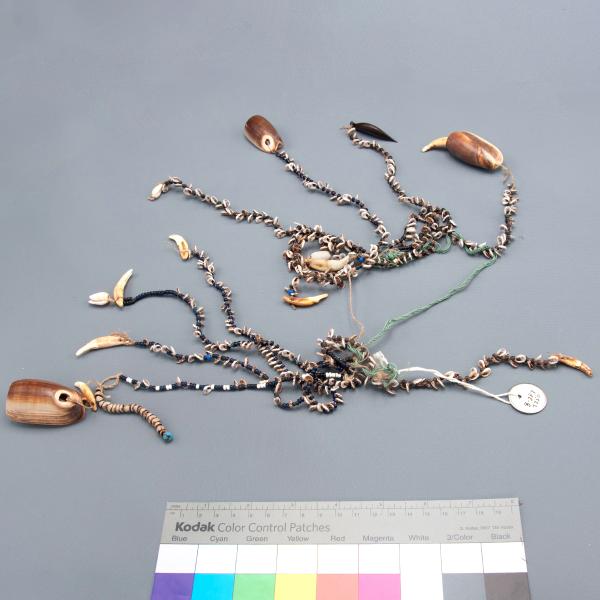Bud Johnson and Bougainville
“In several days I am going to board a Troop Transport for Honolulu where I will join the 30th Engineers which are located near there. From there I will be sent out to help map all of the relatively unknown islands of the Pacific which is the present task of the 30th Engineers. This should be a wonderful opportunity to collect Archaeological and Ethnological data from different islands in the Pacific area. So whenever I hit an island I am going to collect all of the data that I have time for and if you would be interested I would be more than happy to send specimens in to the museum.”
— Conrad 'Bud' Johnson to Hugo Rodeck, University of Colorado Museum of Natural History Director (1948)
Soldiers and museums have a long history of collecting from peoples and places around the world. While attending CU Boulder in the 1940s, Conrad Bud Johnson joined the US military. The relationship between Bud and the University of Colorado Museum of Natural History started when he sent Director Hugo Rodeck objects he collected in Virginia. Heading to the Southwest Pacific with the 30th Engineers, Bud found excitement in mapping the islands and continuing to collect for the museum.
Bougainville Island
The University of Colorado Museum of Natural History’s Bougainville Island collection is a snapshot of the island just after WWII. The collection connects the museum and its visitors with the people and environment of Bougainville Island. The items and photos in the collection tell the stories of relationships, colonization, and change.
Bougainville Island lays northeast of Australia and east of Papua New Guinea in the Solomon Sea. People first settled on the island 33,000 years ago, and it is a place of cultural and biological diversity. A long history of colonial influence has drastically changed Bougainville’s cultural landscape. Deforestation, mining, unsustainable practices, and climate change are transforming its environment.


